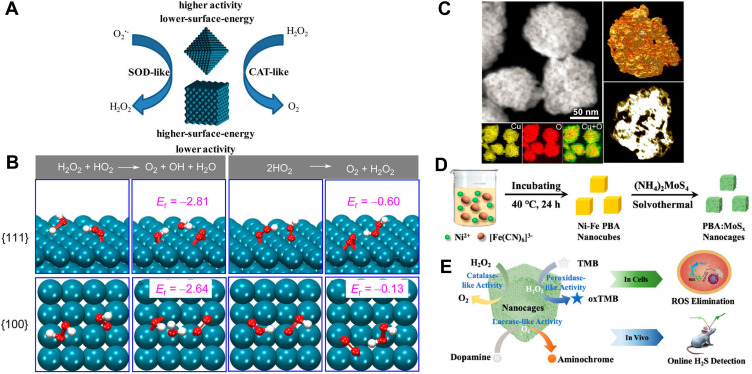Figure 3.
The regulation of nanozyme activity based on physicochemical properties. (A) Lower surface energy {111}-faceted Pd octahedrons and higher surface energy {100}-faceted Pd nanocubes. (B) Lowest-energy adsorption structures and reaction energies (in eV) for the reactions on structures having either Pd 111 or 100 facets. Reprinted with permission from Ge C, Fang G, Shen X et al. Facet energy versus enzyme-like activities: the unexpected protection of palladium nanocrystals against oxidative damage. ACS Nano. 2016;10(11):10,436–10,445. Copyright (2016) American Chemical Society.112 (C) STEM, energy dispersive X-ray spectroscopy (EDS) mapping and electron tomographic reconstruction of CuxO NCs. Reprinted with permission from Hao C, Qu A, Xu L et al. Chiral molecule-mediated porous CuxO nanoparticle clusters with antioxidation activity for ameliorating Parkinson’s disease. J Am Chem Soc. 2019;141(2):1091–1099. Copyright (2019) American Chemical Society.79 Synthetic process (D) and catalytic performance (E) of the Nanocage. Reprinted with permission from Wang C, Ren G, Yuan B et al. Enhancing enzyme-like activities of Prussian blue analog nanocages by molybdenum doping: toward cytoprotecting and online optical hydrogen sulfide monitoring. Anal Chem. 2020;92(11):7822–7830. Copyright (2020) American Chemical Society.120

